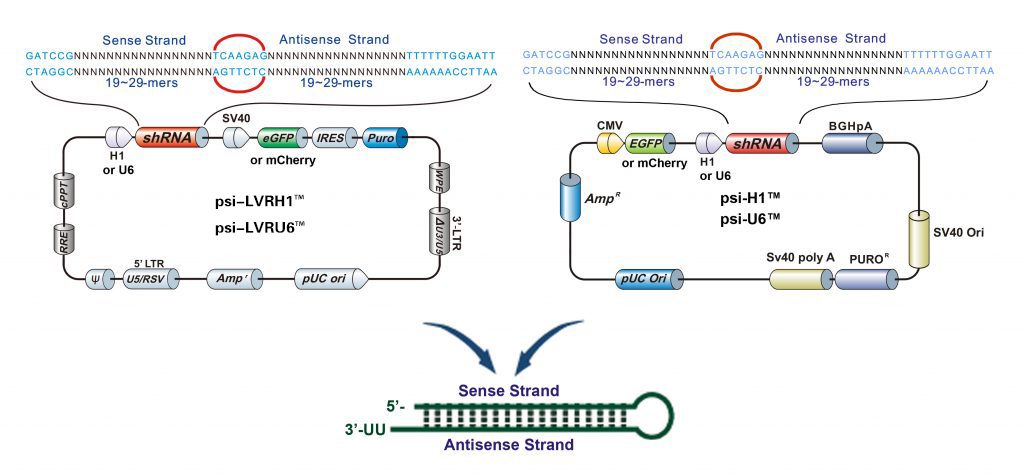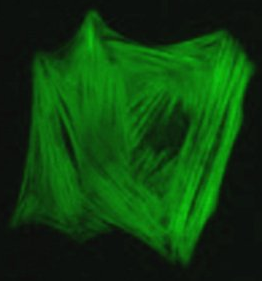Optimal knock-down can be done by a shRNA sequence that depends on the gene expression level and the cell type. Usually, 4 shRNA should be tested to find the one inducing a minimum of 70% increase of the targeted mRNA pool. Genecopoeia has developped shRNA expression vectors with improved performances.
Benefits of the shRNA set
A pool of shRNA doesn’t ensure a real synergy and it cannot be amplified, limiting the number of tests and finally increasing the actual cost of the KD project. Inversely, sets of 4 shRNA expressing vectors can be amplified and the best one in the context of the project can be selected.
Furthermore, Genecopoeia has reduced the set to only 3 shRNA expressing vectors to simplify the testing and the selection of the best one. It is without risk on the performances. Indeed, they examined their shRNA in clone and lentivirus format, and guarantee that with a set of 3 shRNA, when the transfection/transduction efficiency is ≥90%, the knockdown effect is at least 70%. Furthermore, they offer an optional service of shRNA validation (available on request to tebu-bio in Europe).
Keeping control of the efficiency
You can access numerous solutions to optimise the transfection and reach the wished >90%, from broad spectrum reagents to pre-optimised ones. Alternatively, a selection can be done to establish the cell line. Polyclonal establishment could be enough, however, clonal isolation is very simple thanks to the Smart Aliquotor.
New structure – new reporter

Classically, shRNA is expressed under PolIII promoter U6/H1 and the eGFP is under a PolII promoter, here SV40 or CMV. You can see on the illustration above, the lentiviral version on the left and the clone on the right.The eGFP reveals the transfection efficiency.

Genecopoeia has experienced that U6/H1-based shRNA expression and CMV/EF1a-based eGFP-shRNA expression (as just above) lead to similar knock down efficiency. However, in the CMV/EF1a-based eGFP-shRNA expression the eGFP reveal also the relative level of shRNA expression into the cells. We provide the CMV/EF1a-based solution only as lentiviral particles ready to be transduced into targeted cells so that it can be used also with har-to-transfect cells. Again, the Smart Aliquotor can help isolate the cells with maximum green fluorescence for maximum shRNA expression. AAV can be provided if needed too.
By the way, we can also provide the set as lentiviral particle ready to be transduced into targeted cells or as AAV if needed (don’t hesitate to get in touch to learn more).
Validation service
An optional, though very useful validation service is possible upon request. It is based on reporter enzymatic assays to quantify the knock-down efficiency.

A. In the absence of shRNA, AP is expressed and its activity is quantified by colorimetric assay. B. Co-transfection of shRNA and AP-ORF expression clones, chimeric mRNA for AP-ORF is destroyed and, subsequently AP translation and its activity is reduced.
As always, if you have any questions or would like to discuss these shRNA tools, just leave us a comment below – we’ll be pleased to answer!



